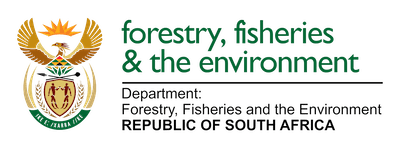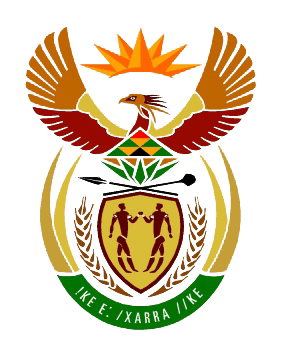
by Ria Olivier | Dec 24, 2021 | Antarctica, News, Research, SA Agulhas II, SANAE, Southern Ocean
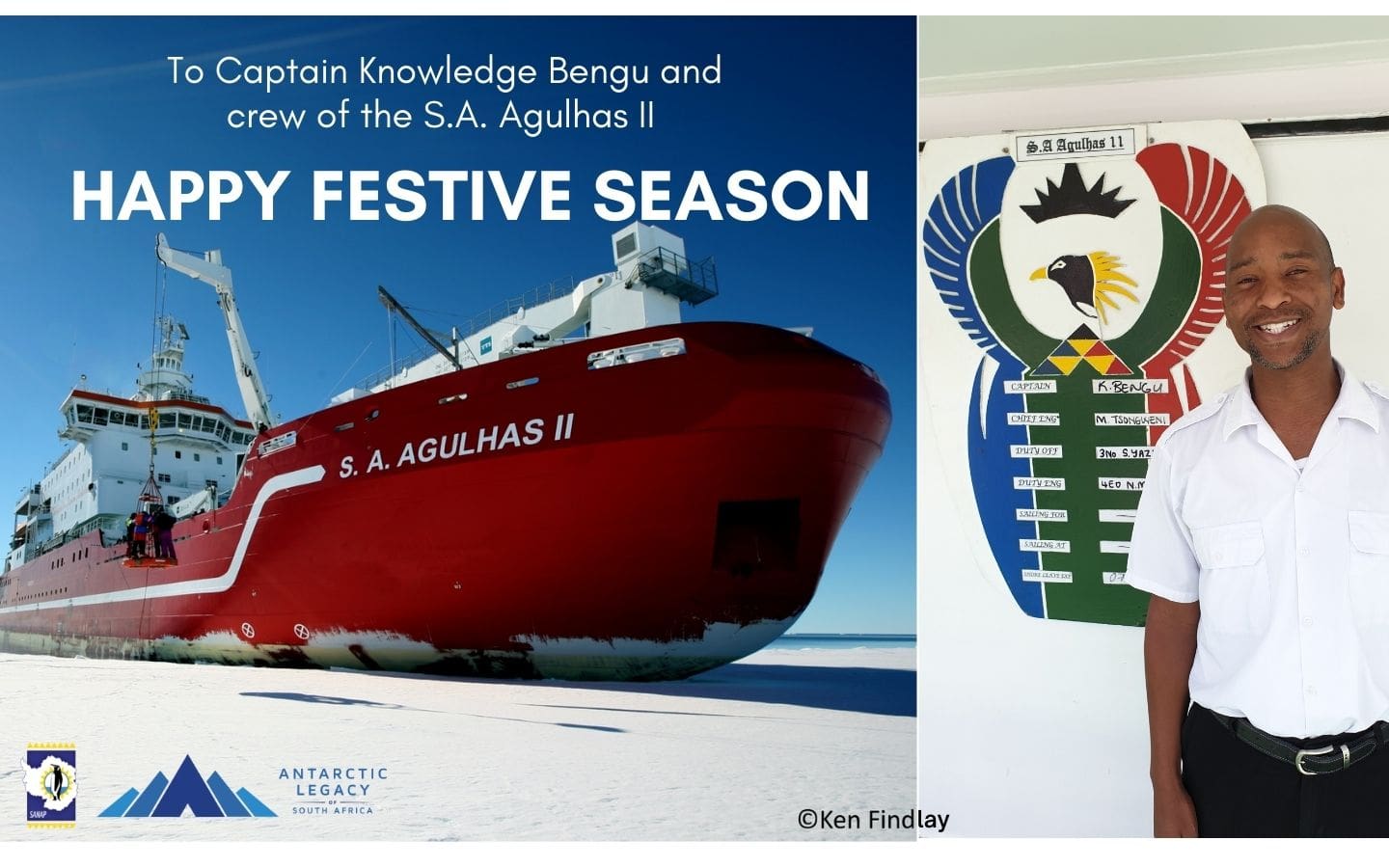 ALSA would like to wish all onboard the research and supply vessel, the S.A. Agulhas II, currently at the Antarctic ice shelf, a happy festive season.
ALSA would like to wish all onboard the research and supply vessel, the S.A. Agulhas II, currently at the Antarctic ice shelf, a happy festive season.
Special thoughts go out to the Captain of the vessel, Captain Knowledge Bengu, and the crew who will be having all hands on deck throughout the festive season. Thank you for supporting all the research activities etc. onboard.
A special message to the AMSOLITES (Captain and Crew) from AMSOL:

Anche Louw, Antarctic Legacy of South Africa, 24 December 2021.

by Ria Olivier | Dec 21, 2021 | Antarctica, News, Overwintering Team, SANAE, Team Photo
SANAE 60 wishes you a happy festive season!
 The 60th South African National Antarctic Expedition (SANAE) team’s time alone at SANAE IV has come to an end. They will spend this festive season with the new team members (SANAE 61) and take-over personnel that have reached the station.
The 60th South African National Antarctic Expedition (SANAE) team’s time alone at SANAE IV has come to an end. They will spend this festive season with the new team members (SANAE 61) and take-over personnel that have reached the station.
Would you like to send a special message to the team?
Please email me at anchemuller@sun.ac.za or comment on the Facebook post, see below.
Send a message to the South Africans spending Christmas on Antarctica – Click here and comment on the Facebook Post: Click here
60th SANAE IV Overwintering Team (SANAE 60)
Anche Louw, Antarctic Legacy of South Africa, 21 December 2021.

by Ria Olivier | Dec 1, 2021 | Antarctica, Important Dates, International Days, Not-Assigned, SANAE
Today, 62 years ago, 12 countries (including South Africa) signed the Antarctic Treaty. On the 1st of December 1959, Antarctica was set aside for peaceful and scientific purposes. This day is celebrated all over the world. Join the Scientific Committee on Antarctic Research (SCAR) related celebrations, see events here. 

Currently, over 50 countries have signed the Antarctic Treaty. In the image (left), flags are displayed of countries (52 flags) that have signed the Antarctic Treaty by 2015. Read more about the treaty here.
Let us be reminded of the 26th United Nations Climate Change Conference (COP26), held in Scotland earlier this year, where the Glasgow Climate Pact was made. We all need to work together to limit the global temperature rise to 1.5 degrees. See what Minister of Forestry, Fisheries and the Environment, Ms Barbara Creecy commented on the outcomes of the international climate change talks at COP26 (click here).
An unnamed Antarctic glacier was named Glasgow, honoring the city where COP26 took place and new agreements were made to take rapid action against climate change (read more here).
The South African National Antarctic Programme contributes climate change research in the Antarctic, sub-Antarctic, including the Southern Ocean.
Want to know the history of the South African National Antarctic Expedition station? Read more about the current and previous South African stations here.
Antarctic Legacy of South Africa, 1 December 2021

by Ria Olivier | Jan 5, 2021 | Antarctica, SA Agulhas II, SANAE, SANAP, Uncategorised
After stormy weather at the dawn of 2021, the SA Agulhas II arrived at Penguin Bukta at 11h30 UTC on 4 January!
 This year the vessel entered notable ice cover at 67° 50′ S. It was mostly easy going with some ramming during the early hours of 4 January. The later departure of the SA Agulhas II has resulted in ice navigation later in the summer. The ice is more depleted by now and navigation has been more straight forward.
This year the vessel entered notable ice cover at 67° 50′ S. It was mostly easy going with some ramming during the early hours of 4 January. The later departure of the SA Agulhas II has resulted in ice navigation later in the summer. The ice is more depleted by now and navigation has been more straight forward.


The SA Agulhas II skirted a storm in her approach to Antarctica. She was peppered with winds of 50 to 60 knots underway. (Left) If you are lucky enough to escape motion sickness the sea spray from bow slamming compliments the spectacular sunset. (Right)
 The ship enters notable sea ice on the morning of 3 January. Here the ice floes are about 10 m in diameter and concentrated at about 80% with some snow cover and only a few centimeters of ice thickness. (In our science we also visually observe the ice and our ‘data’ may vary due to subjective opinion – Do you agree?).
The ship enters notable sea ice on the morning of 3 January. Here the ice floes are about 10 m in diameter and concentrated at about 80% with some snow cover and only a few centimeters of ice thickness. (In our science we also visually observe the ice and our ‘data’ may vary due to subjective opinion – Do you agree?).

The ice cover becomes increasingly dense but the ship is not required to show her steel yet – owing to the voyage being postponed later in summer. How will her later departure in March influence the ice conditions and will she need to show her steel then?
On 4 January the SA Agulhas II arrived at the ice shelf in Penguin Bukta to bask in the calm after the storm
 Thank you to Nicholas Bunn and Karl Pferdekamper (Stellenbosch University, Department of Mechanical and Mechatronic Engineering who are on board and have sent this information). Poor internet hampers their access to Facebook, but they could get this information to Prof Bekker via WhatsApp. Photo credits: @Karl Pferdekamper.
Thank you to Nicholas Bunn and Karl Pferdekamper (Stellenbosch University, Department of Mechanical and Mechatronic Engineering who are on board and have sent this information). Poor internet hampers their access to Facebook, but they could get this information to Prof Bekker via WhatsApp. Photo credits: @Karl Pferdekamper.
Text by Prof Annie Bekker of the Sound & Vibration Research Group of the Department of Mechanical and Mechatronic Engineering at Stellenbosch University.

by Ria Olivier | Dec 26, 2020 | Antarctica, SANAE, SANAP
 SANAE 60 departed on 25 December at 22:20 from Cape Town harbour to Antarctica.
SANAE 60 departed on 25 December at 22:20 from Cape Town harbour to Antarctica.
Address by Mr Ashley Naidoo, Acting Deputy Director-General: Oceans and Coasts
On the Departure of the SA Agulhas II to Antarctica, On Friday, 25 December 2020,
Greetings to all you all SANAP Participants, Crew, Team Members, Officer and Scientists. Most cruise on this ship have some unusal aspect associated with the cruise objectives, operations or destinations. A voyage to Antarctica certainly fits within this, but this year the cruise preparations also added several layers of uniqueness and firsts. I am Ashley Naidoo, Acting Deputy Director-General of Oceans and Coasts. How I wish I could have made this send-off message personally alongside the vessel as in past years. The pandemic has turned things up-side-down but through it all, here you are still dedicated to the programme. I would like to acknowledge your bravery, commitment, zeal and taking the bold step in ensuring success and continuity of this important work. The extended quarantine period coupled with the anxiety of waiting for the covid-19 test results was a huge ask – I thank you for your patience.
This voyage’s planning came with numerous pleas from your Principals to allow more personnel, sadly we had to once again reduce numbers to keep with the quarantine and social distancing protocols. Please convey our sincere appreciation to them and your organisations for their understanding. This does mean that our various teams have fewer than the usual numbers of members. Please continue practising ‘Ubuntu’ and lend a helping hand where it is needed.
I will not be doing justice if I do not send a special ‘cheerio’ to the eight incredible SANAE 60 over-wintering expedition team members that will be spending approximately 14 months on the ‘ice continent’. South Africa first embarked on a National Expedition to Antarctica in 1960. This was after signing of the original Treaty with 11 other contries in December of the preceding year. Worth mentioning is that amongst the S60 team are old and experienced hands who had undertaken Antarctic and Marion expeditions before. This team is quite privileged to have Mr Kagiso ‘Kg’ Malepe and Gerard ‘Boy’ Oppel who bring a host of experience to both the expedition and the programme. This includes Kg’s previous experience as Shore-based Chief Scientist for the Antractic relief voyage.
To all of you on board, the Scientists, the Harzard Identification and Risk Assessment (HIRA) Expert, the team from the National Department of Public Works and Infrastructure, to the DEFF coordinating team, with Ms Kusi Ngxabani the Departmental Coordinating Officer, her Assistant Mr Sibusiso Mhambi who will also oversee the Technical work, Ms Libuso Phalane, the Admin Officer and both Messrs Mazizi Salmani and Sabata Setona as Waste Technicians, thank you for working tirelessly before and during the quarantine period; Ultimate Heli crew, AMSOL crew and the team that assisted in packing of all supplies and ensuring they are loaded on the vessel. I cannot thank you enough in making it possible to get us to this point. I can’t help but send a special thanks to Mr Stiaan Kotze who, due to circumstances beyond our control joined the voyage at the eleventh hour. Stiaan will carry out environmental conservation duties during the voyage. The SANDF team that has been seconded to the voyage, thank you for once again availing yourselves to assist us. I am equally grateful to your friends, family and loved ones in affording you the opportunity to serve the Nation despite these trying times. The quarantine period even made your absence lengthier and on that note, please convey my heartfelt gratitude to your families.
For the first time on our expedition, we are blessed with a female Pilot, Ms Lisa Burger. This, Ladies and Gentlemen, takes me back to the 2019/2020 Antarctic relief voyage experience with yet another lady that joined the voyage as the first woman Driver. TJ Mareme actually drove more than 300km at no more than 20km p/hr in the big Challenger transferring cargo and fuel to and from the ice shelf. Well done Ladies. What an inspiration to other young women. Our society needs women like TJ and Lisa. Ke a leboga, baie dankie, ndiyabulela mantombazana!!!
The other good news worth sharing is the approval of the ‘Revised Antarctic and Southern Ocean Strategy’. The strategy provides, inter alia, for the coordination and implementation of the Antarctic Treaties Act (Act 60 of 1996) relating to research, conservation, sustainable resource use and environmental management in support of the African Agenda. This also contributes to the Sustainable Development Goals, by recognizing that the Antarctic and Southern Ocean are critical parts of the global climate system.
To the DEFF team behind the scenes, thank you for finding ways over and around the many stumbling blocks in preparing for this voyage. Through it all, the vessel is now about to sail with all the supplies safely on board.
To Captain Knowledge Bengu and crew, our well wishes are with you during this voyage and smooth sailing to the ‘ice’ continent. I know for a fact that as always, you will work tirelessly in ensuring living conditions and meals on board are of a high standard.
To all Christians on this voyage, may you have a blessed Christmas and, to each and everyone, a prosperous New Year! As you leave us behind, we promise to be safe during the Festive season and we will continue practicing safety covid-19 standards!


 I look forward to seeing you on your return from the relief voyage and expedition.
I look forward to seeing you on your return from the relief voyage and expedition.
Nihambe kakuhle, Le tsamaye hantle, Hambani kahle, Mag dit goed gaan (of tot siens), Ga botse, Ndi zwone, Mufambe zvakanaka, Good-bye!!!
 Cover Image:
Cover Image:
Departure from Capet Town Harbour on Christmas day
Christopher Gray – SANAE60
Also see Video Clip on Facebook

by Ria Olivier | Jul 17, 2020 | Antarctica, SANAE, SANAP, Science, SEAmester
 Stephen involvement in SANAP started back in 2016 when he was a student at UCT. He was working towards his Honours degree in Environmental Management when he came across the SEAmester programme and the opportunity to go to sea. “I applied and successfully made it into the programme. This was a huge moment as Antarctica and the South Africa’s prized research vessel, the SA Agulhas II, have always fascinated me. I loved every minute of the SEAmester programme, so much so that I spent every moment of extra time learning about all the science instruments used on the expeditions to Antarctica. Later that year I was granted the opportunity to participate in the SANAE 56 take over expedition. As expected, I did indeed fall in love with Antarctica.
Stephen involvement in SANAP started back in 2016 when he was a student at UCT. He was working towards his Honours degree in Environmental Management when he came across the SEAmester programme and the opportunity to go to sea. “I applied and successfully made it into the programme. This was a huge moment as Antarctica and the South Africa’s prized research vessel, the SA Agulhas II, have always fascinated me. I loved every minute of the SEAmester programme, so much so that I spent every moment of extra time learning about all the science instruments used on the expeditions to Antarctica. Later that year I was granted the opportunity to participate in the SANAE 56 take over expedition. As expected, I did indeed fall in love with Antarctica.


 Throughout my university career I had been very involved in home-brewing and the brewing industry. I was virtually brewing as much as I was studying and started a nano brewery in the back of a local Cape Town pub. I would bounce between classes and the brewery daily spending most of my time forging relationships with bars and brewers. Before I knew it, this hobby had turned into a functioning business. I had a small range of beers that I would sell before I’d even brewed the beer. As a student, cash and cash flow are always a difficulty and this sales approach (which is very unusual) worked for my situation.
Throughout my university career I had been very involved in home-brewing and the brewing industry. I was virtually brewing as much as I was studying and started a nano brewery in the back of a local Cape Town pub. I would bounce between classes and the brewery daily spending most of my time forging relationships with bars and brewers. Before I knew it, this hobby had turned into a functioning business. I had a small range of beers that I would sell before I’d even brewed the beer. As a student, cash and cash flow are always a difficulty and this sales approach (which is very unusual) worked for my situation.


 The SANAE 56 take over expedition was an experience that changed my life for the better. I learnt the importance of science and exploration as a fundamental duty to better protect our planet. I was amazed by the commitment of the scientists and researchers involved in ocean and Antarctic studies. It was also on this expedition that I read and learnt about the great Sir Ernest Shackleton, whose unrivaled story of leadership, exploration and survival had an impact on me. So much so that upon returning from Antarctica I decided to name our brewery Shackleton Brewing Company. Our goal as a brand is to inspire people through Shackleton’s endeavor and acknowledge the value of research in ocean and Antarctic studies. This has always been a focus on the brand and translating this through our products.
The SANAE 56 take over expedition was an experience that changed my life for the better. I learnt the importance of science and exploration as a fundamental duty to better protect our planet. I was amazed by the commitment of the scientists and researchers involved in ocean and Antarctic studies. It was also on this expedition that I read and learnt about the great Sir Ernest Shackleton, whose unrivaled story of leadership, exploration and survival had an impact on me. So much so that upon returning from Antarctica I decided to name our brewery Shackleton Brewing Company. Our goal as a brand is to inspire people through Shackleton’s endeavor and acknowledge the value of research in ocean and Antarctic studies. This has always been a focus on the brand and translating this through our products.

 My biggest life decision came after the SANAE 56 take over expedition. I had to choose whether to continue my studies or work in the field that I had studied or to pursue the brewing business. At the time the business did not feel like a sustainable option, but I saw it as an experience that I could learn from. It all fell into place when I secured an investor that funded a proposal, I put forward to purchase a brewery from the UK. Signed, sealed and my brewing path had been decided. I spent two months in the UK packing up a brewery into a container to send back to Cape Town. The equipment was in perfect condition when it landed after a long cruise from Bristol port. Over the next few years, the business grew, and the brand has become established in the brewing industry.
My biggest life decision came after the SANAE 56 take over expedition. I had to choose whether to continue my studies or work in the field that I had studied or to pursue the brewing business. At the time the business did not feel like a sustainable option, but I saw it as an experience that I could learn from. It all fell into place when I secured an investor that funded a proposal, I put forward to purchase a brewery from the UK. Signed, sealed and my brewing path had been decided. I spent two months in the UK packing up a brewery into a container to send back to Cape Town. The equipment was in perfect condition when it landed after a long cruise from Bristol port. Over the next few years, the business grew, and the brand has become established in the brewing industry.

 It had always been a goal to collaborate with Univeristy of Cape Town and the Oceanography department, which has given me so much. Our idea came into fruition as we set out to celebrate science and sustainability in the form of a beer. Using the discarded Antarctic sea ice cores as the primary ingredient (water), we made a beer that embodied the message of science and sustainability. The beer used organic malt, sensibly harvested hops and packaged in a handmade wooden box with the story about the project. We partnered with institutions and organisations who played an important role in making this product possible. Shackleton has committed 10% of all the beer sales to be donated to the SEAmester programme in the hopes of funding 1 extra student to have the experience I did. It was a brilliant launch night with Antarctic Legacy of South Africa (a partner in the project) displaying books, info packs etc for the guests to read. Many people don’t know the value of the research done in Antarctica and this night was an experience that educated and celebrated science to our beer community.
It had always been a goal to collaborate with Univeristy of Cape Town and the Oceanography department, which has given me so much. Our idea came into fruition as we set out to celebrate science and sustainability in the form of a beer. Using the discarded Antarctic sea ice cores as the primary ingredient (water), we made a beer that embodied the message of science and sustainability. The beer used organic malt, sensibly harvested hops and packaged in a handmade wooden box with the story about the project. We partnered with institutions and organisations who played an important role in making this product possible. Shackleton has committed 10% of all the beer sales to be donated to the SEAmester programme in the hopes of funding 1 extra student to have the experience I did. It was a brilliant launch night with Antarctic Legacy of South Africa (a partner in the project) displaying books, info packs etc for the guests to read. Many people don’t know the value of the research done in Antarctica and this night was an experience that educated and celebrated science to our beer community.



 Why you love your career in science?I have a huge obsession with business and the many ways to make success out of it. That said, it’s incredibly difficult to actually succeed. Where I feel my true expertise, lie is in the science of brewing. I love the care and attention to all variables that create the outcome. Small slip ups in brewing have exponential knock on effects in the end product. There is science in controlling these variables to consistently producing the same product. There is a saying which I really appreciate – “brewing beer is a science but brewing great beer is an art”. I believe if you can marry the two, you’ll have success in the quality of the product.
Why you love your career in science?I have a huge obsession with business and the many ways to make success out of it. That said, it’s incredibly difficult to actually succeed. Where I feel my true expertise, lie is in the science of brewing. I love the care and attention to all variables that create the outcome. Small slip ups in brewing have exponential knock on effects in the end product. There is science in controlling these variables to consistently producing the same product. There is a saying which I really appreciate – “brewing beer is a science but brewing great beer is an art”. I believe if you can marry the two, you’ll have success in the quality of the product.


 My message to future scientists and researchers: “I believe that science and exploration is a noble pursuit but undoubtedly a rewarding one. It is also our duty to better understand the world and how best to preserve nature its beauty. There is also infinite amount of problems to solve and hypothesize to prove. By becoming a scientist, I believe you are an explorer with intrigue and wonder. I have had the privilege of working with ground-breaking scientists and researchers who have dedicated their life contributing to our collective knowledge about the world.”
My message to future scientists and researchers: “I believe that science and exploration is a noble pursuit but undoubtedly a rewarding one. It is also our duty to better understand the world and how best to preserve nature its beauty. There is also infinite amount of problems to solve and hypothesize to prove. By becoming a scientist, I believe you are an explorer with intrigue and wonder. I have had the privilege of working with ground-breaking scientists and researchers who have dedicated their life contributing to our collective knowledge about the world.”
Images: Herman Luyt, Stephen Peel, Antarctic Legacy of South Africa. Text by Stephen Peel.

 ALSA would like to wish all onboard the research and supply vessel, the S.A. Agulhas II, currently at the Antarctic ice shelf, a happy festive season.
ALSA would like to wish all onboard the research and supply vessel, the S.A. Agulhas II, currently at the Antarctic ice shelf, a happy festive season.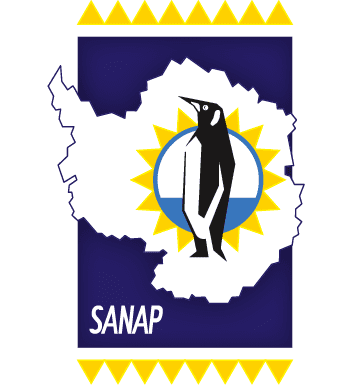
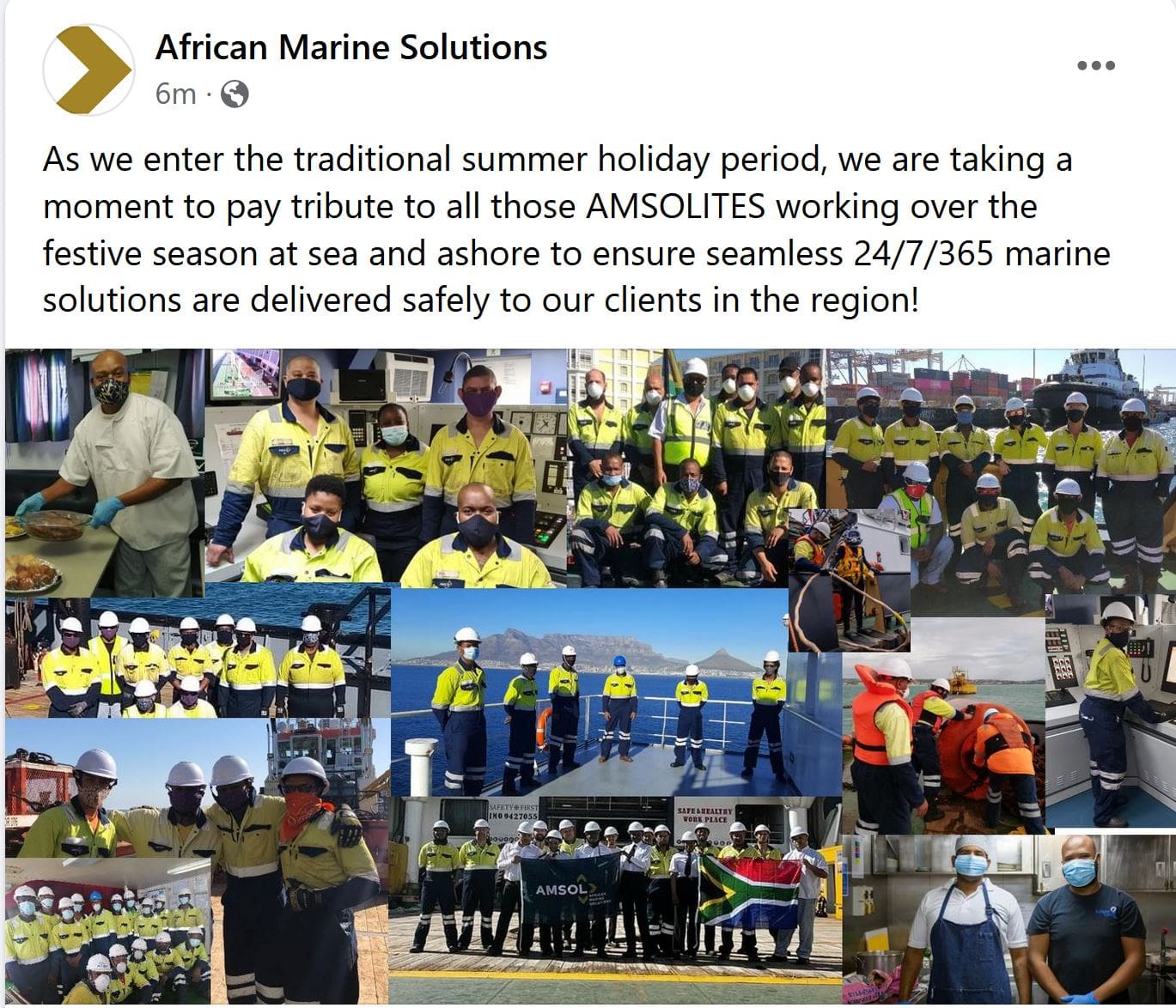
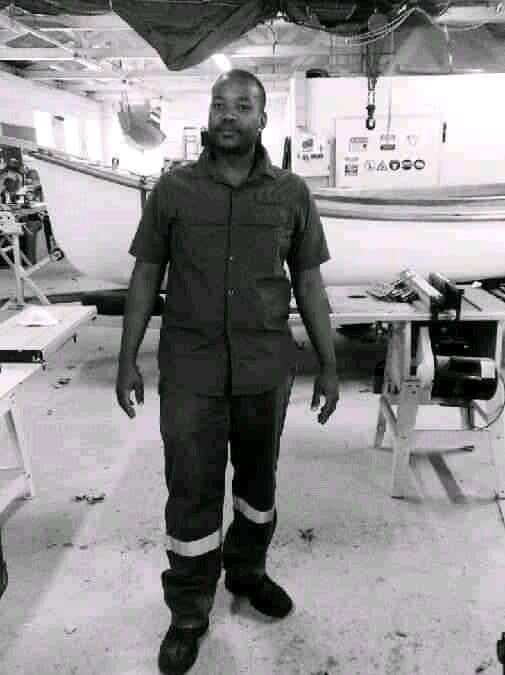
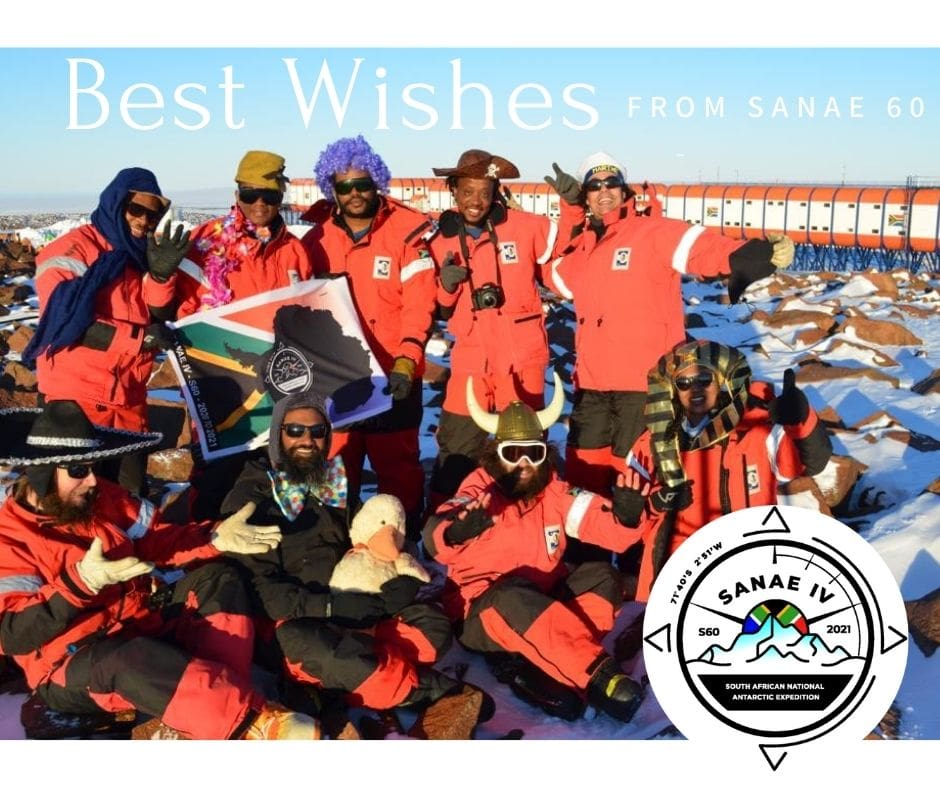 The 60th South African National Antarctic Expedition (SANAE) team’s time alone at SANAE IV has come to an end. They will spend this festive season with the new team members (SANAE 61) and take-over personnel that have reached the station.
The 60th South African National Antarctic Expedition (SANAE) team’s time alone at SANAE IV has come to an end. They will spend this festive season with the new team members (SANAE 61) and take-over personnel that have reached the station. 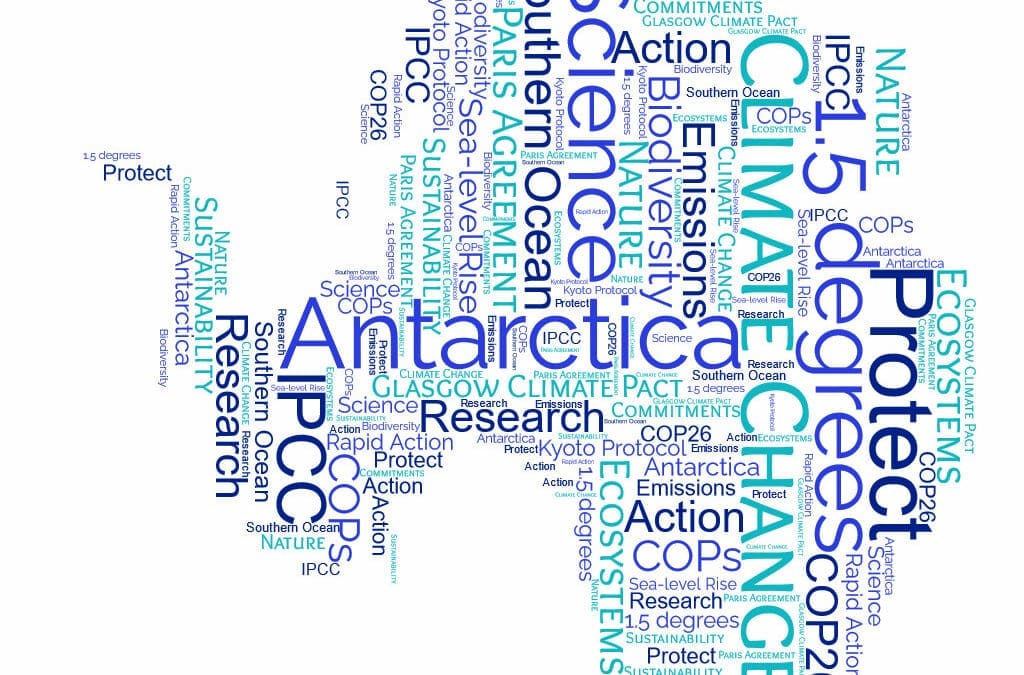
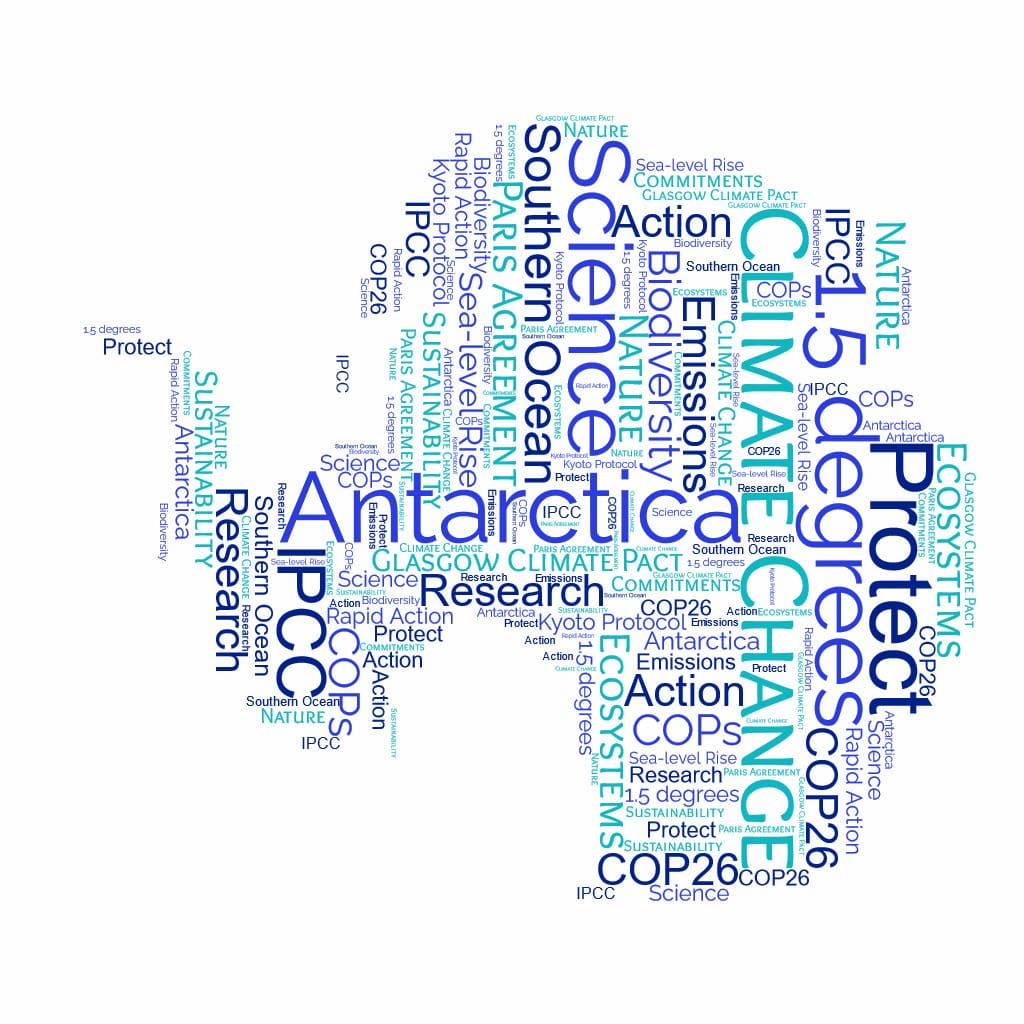

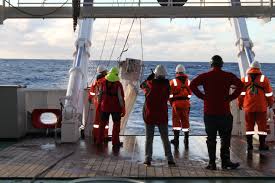
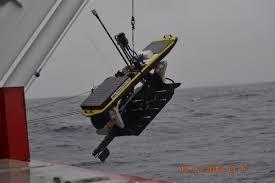 This year the vessel entered notable ice cover at 67° 50′ S. It was mostly easy going with some ramming during the early hours of 4 January. The later departure of the SA Agulhas II has resulted in ice navigation later in the summer. The ice is more depleted by now and navigation has been more straight forward.
This year the vessel entered notable ice cover at 67° 50′ S. It was mostly easy going with some ramming during the early hours of 4 January. The later departure of the SA Agulhas II has resulted in ice navigation later in the summer. The ice is more depleted by now and navigation has been more straight forward.

 The ship enters notable sea ice on the morning of 3 January. Here the ice floes are about 10 m in diameter and concentrated at about 80% with some snow cover and only a few centimeters of ice thickness. (In our science we also visually observe the ice and our ‘data’ may vary due to subjective opinion – Do you agree?).
The ship enters notable sea ice on the morning of 3 January. Here the ice floes are about 10 m in diameter and concentrated at about 80% with some snow cover and only a few centimeters of ice thickness. (In our science we also visually observe the ice and our ‘data’ may vary due to subjective opinion – Do you agree?).

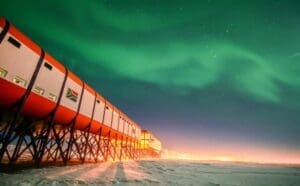 SANAE 60 departed on 25 December at 22:20 from Cape Town harbour to Antarctica.
SANAE 60 departed on 25 December at 22:20 from Cape Town harbour to Antarctica.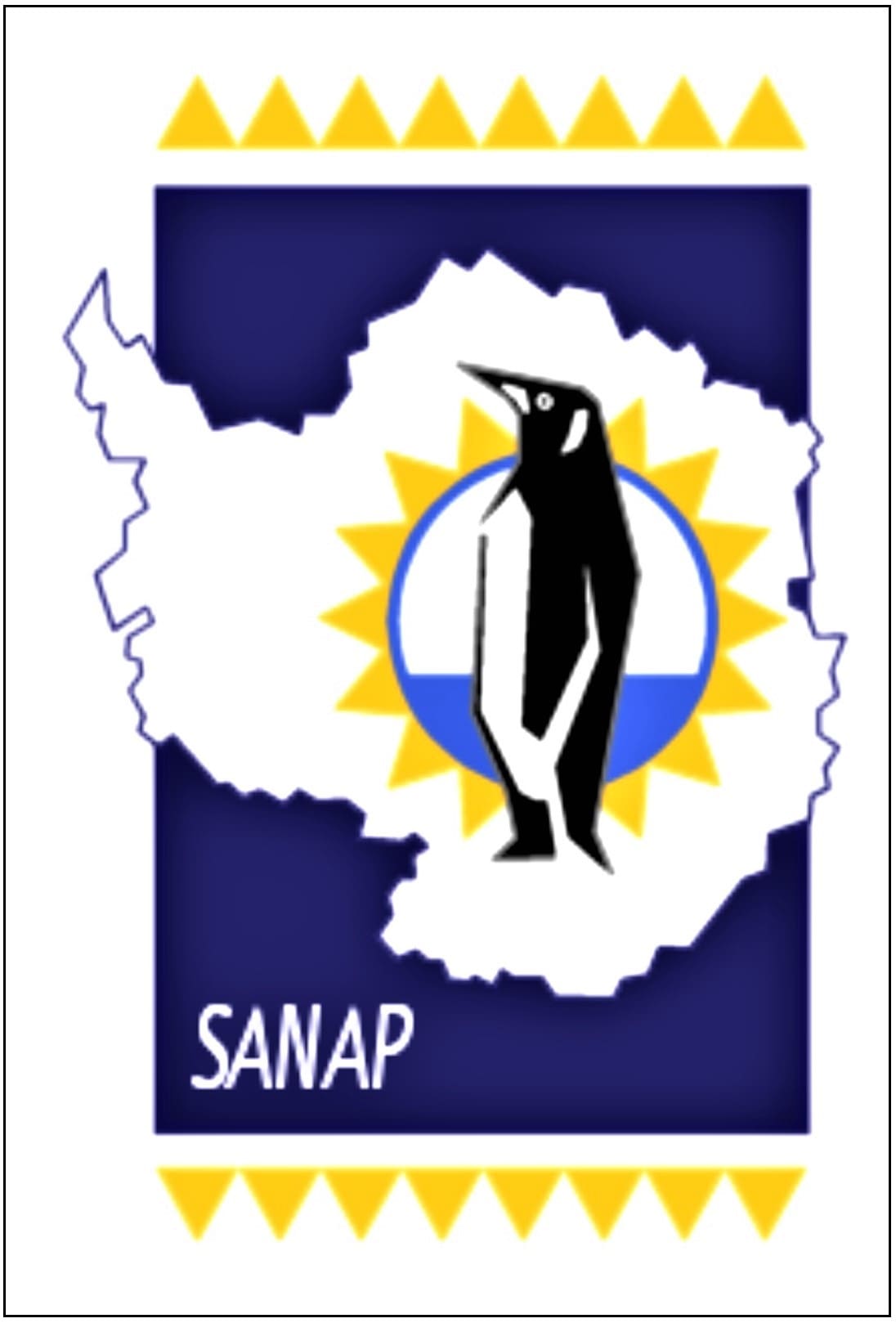

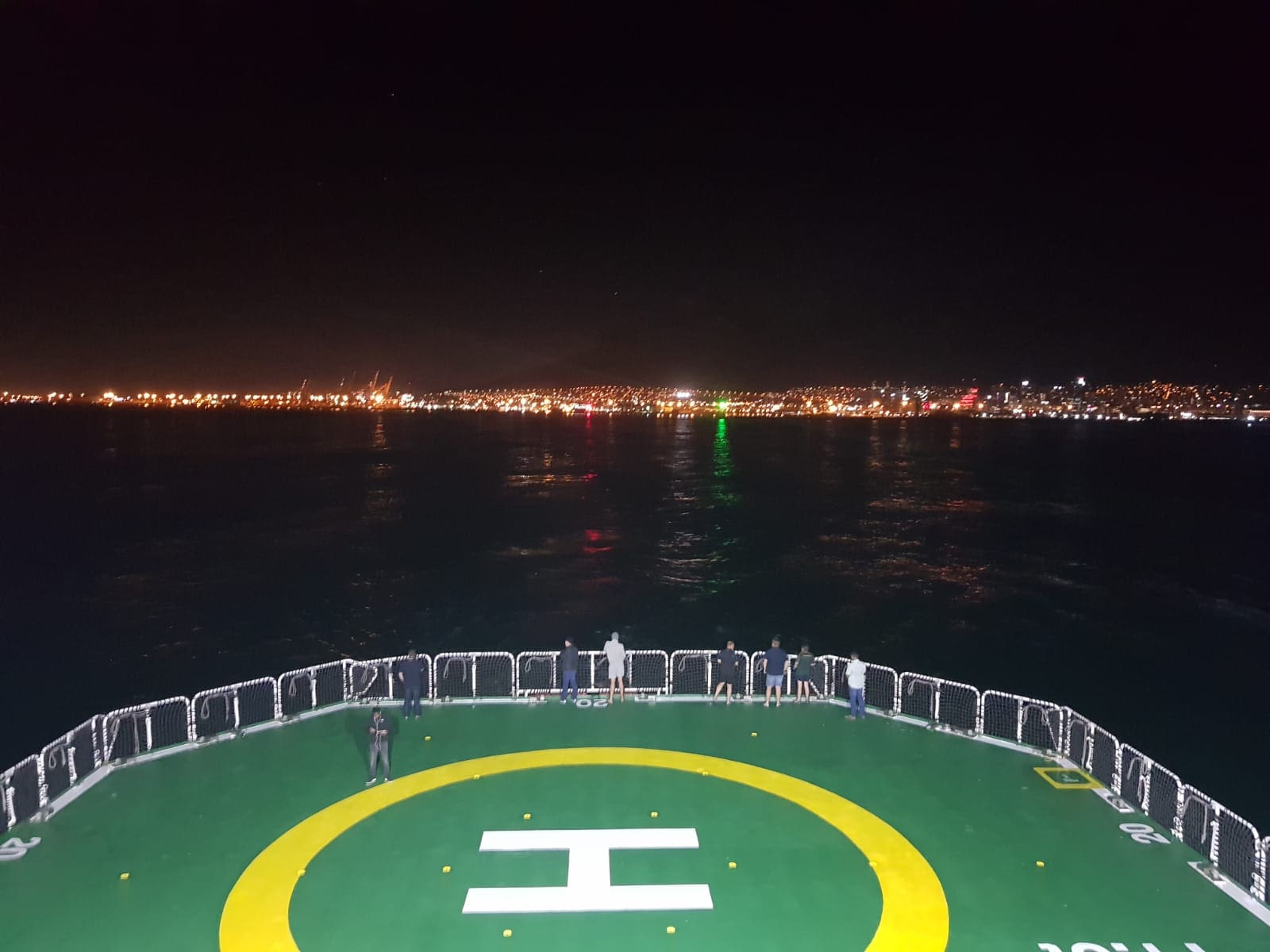 Cover Image:
Cover Image: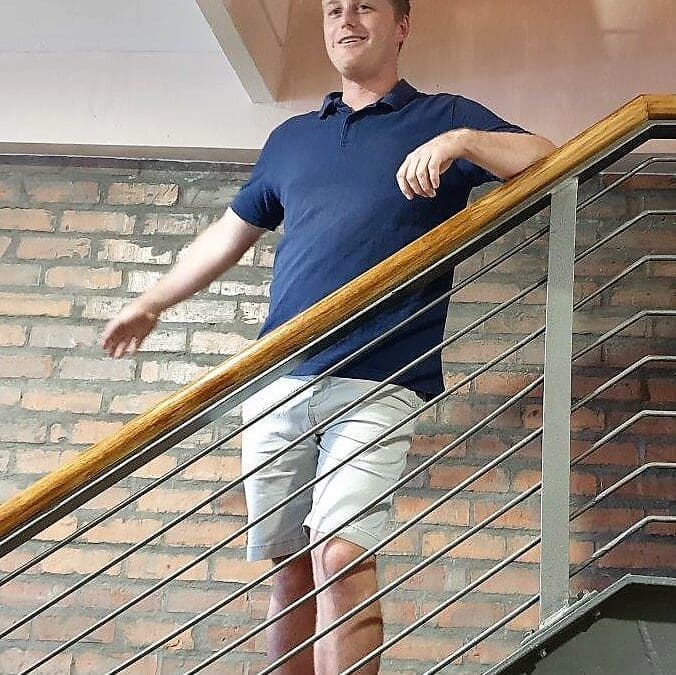
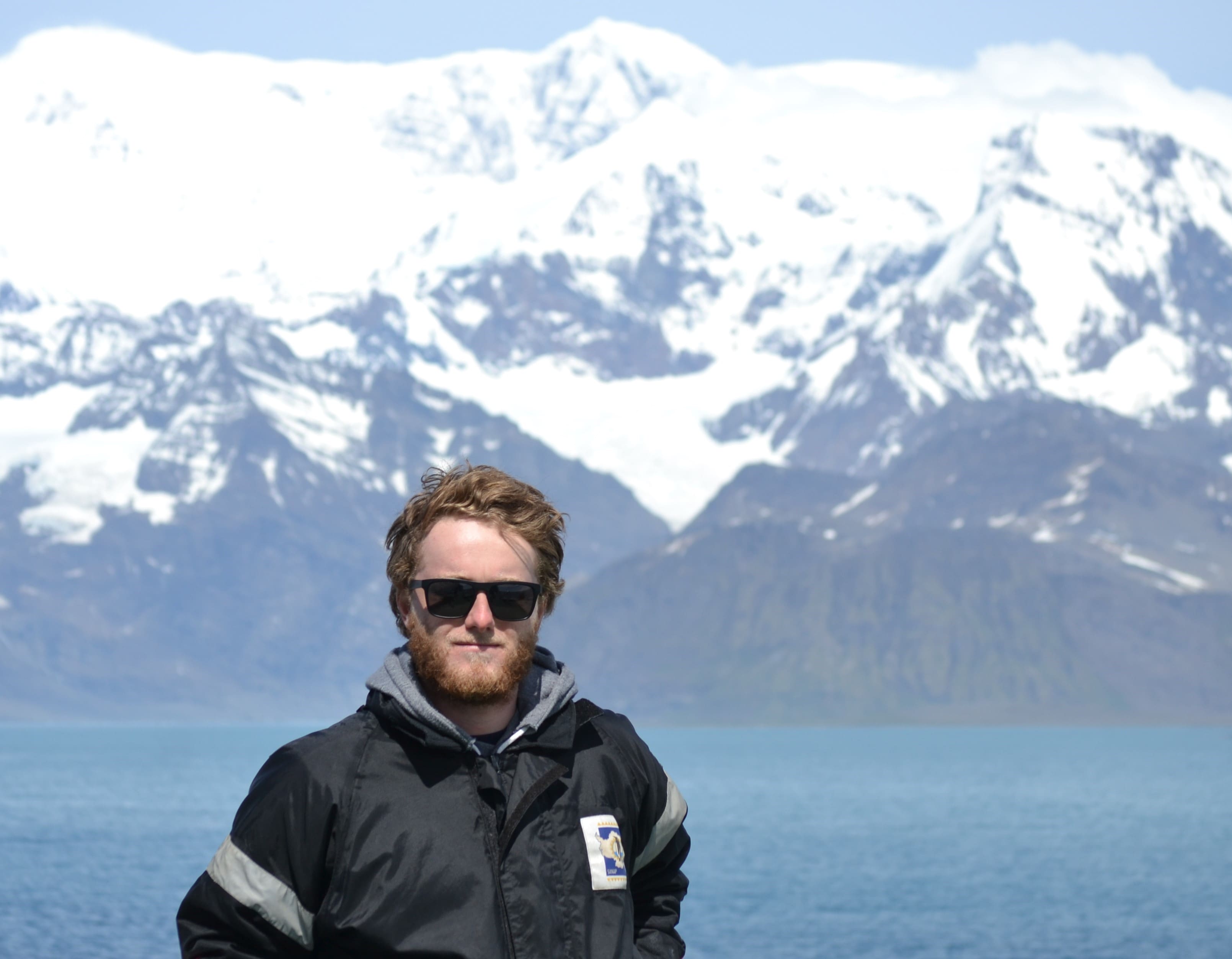 Stephen involvement in SANAP started back in 2016 when he was a student at
Stephen involvement in SANAP started back in 2016 when he was a student at 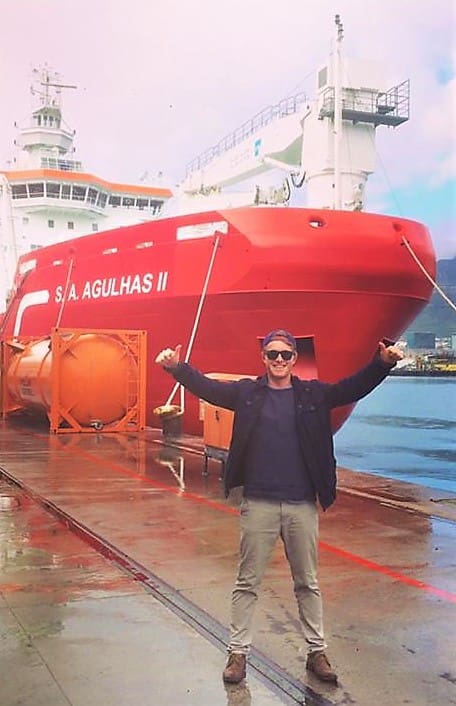
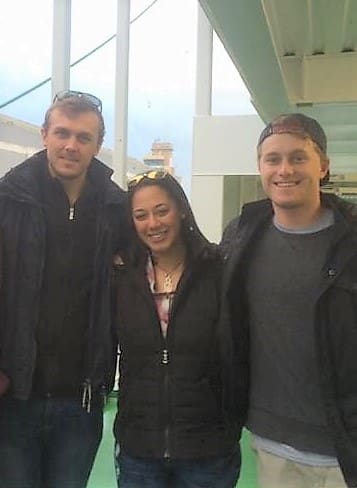
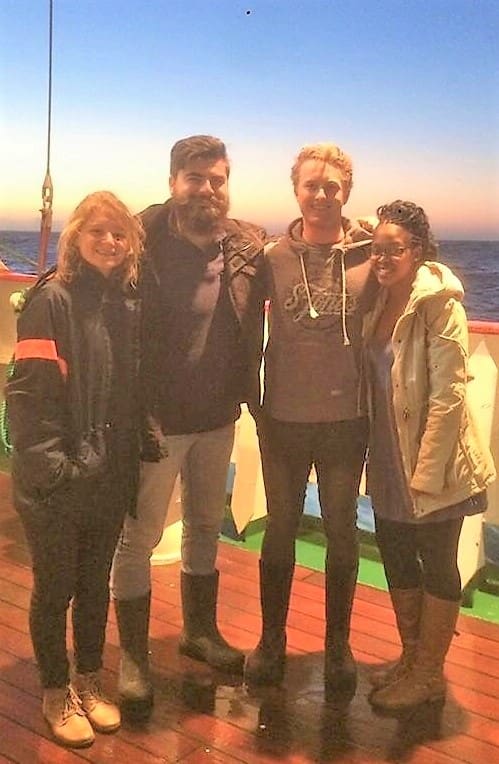 Throughout my university career I had been very involved in home-brewing and the brewing industry. I was virtually brewing as much as I was studying and started a nano brewery in the back of a local Cape Town pub. I would bounce between classes and the brewery daily spending most of my time forging relationships with bars and brewers. Before I knew it, this hobby had turned into a functioning business. I had a small range of beers that I would sell before I’d even brewed the beer. As a student, cash and cash flow are always a difficulty and this sales approach (which is very unusual) worked for my situation.
Throughout my university career I had been very involved in home-brewing and the brewing industry. I was virtually brewing as much as I was studying and started a nano brewery in the back of a local Cape Town pub. I would bounce between classes and the brewery daily spending most of my time forging relationships with bars and brewers. Before I knew it, this hobby had turned into a functioning business. I had a small range of beers that I would sell before I’d even brewed the beer. As a student, cash and cash flow are always a difficulty and this sales approach (which is very unusual) worked for my situation.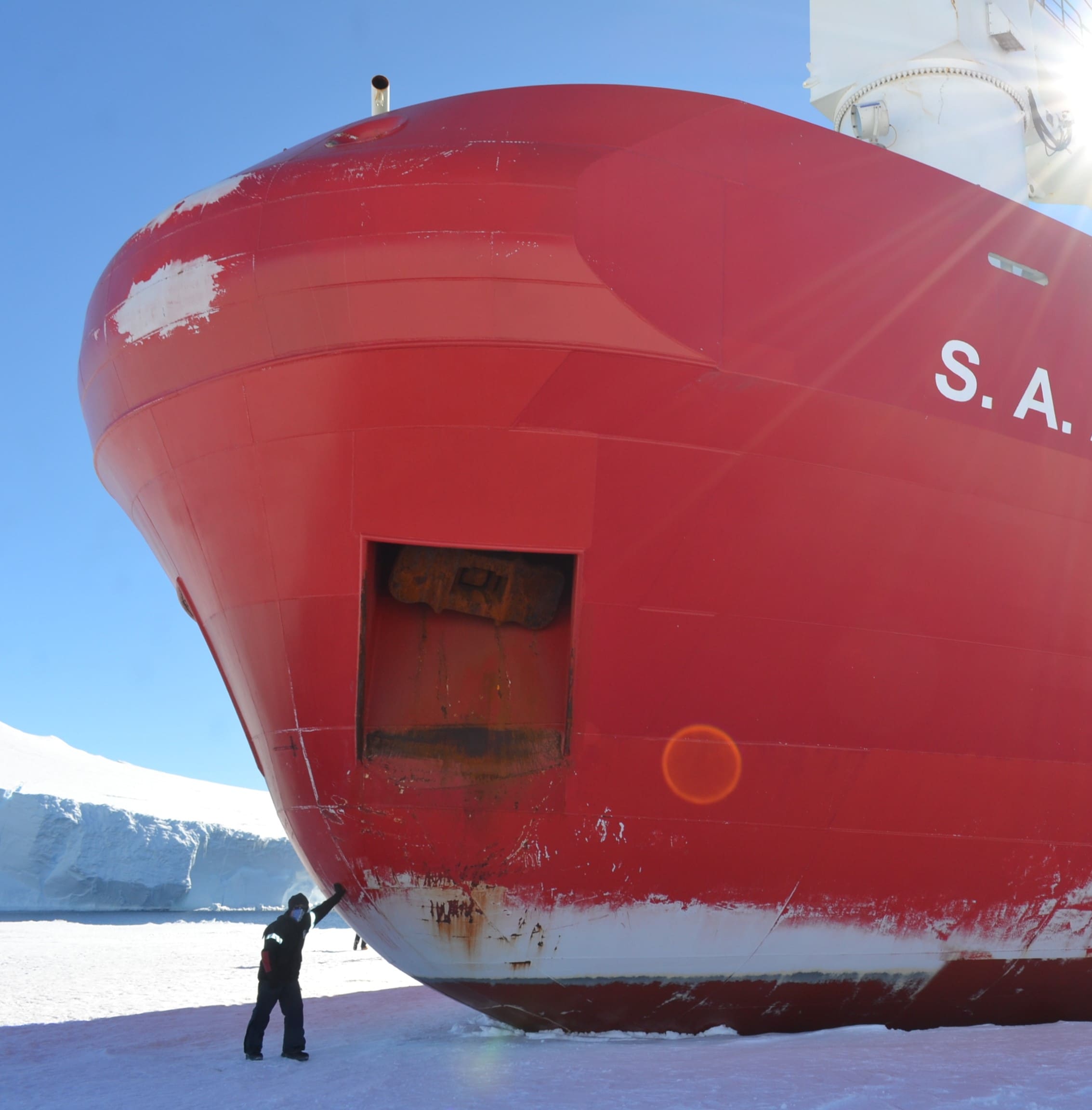

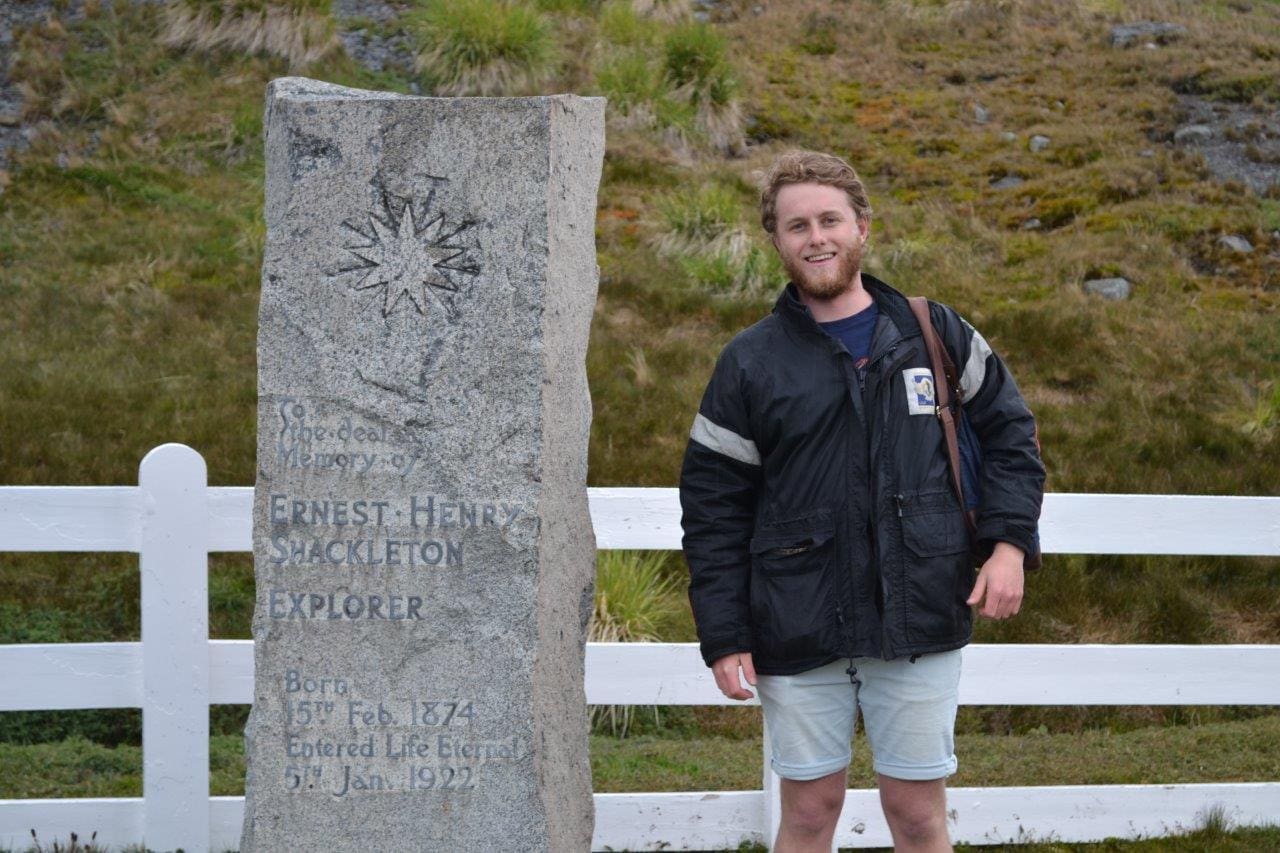 The
The 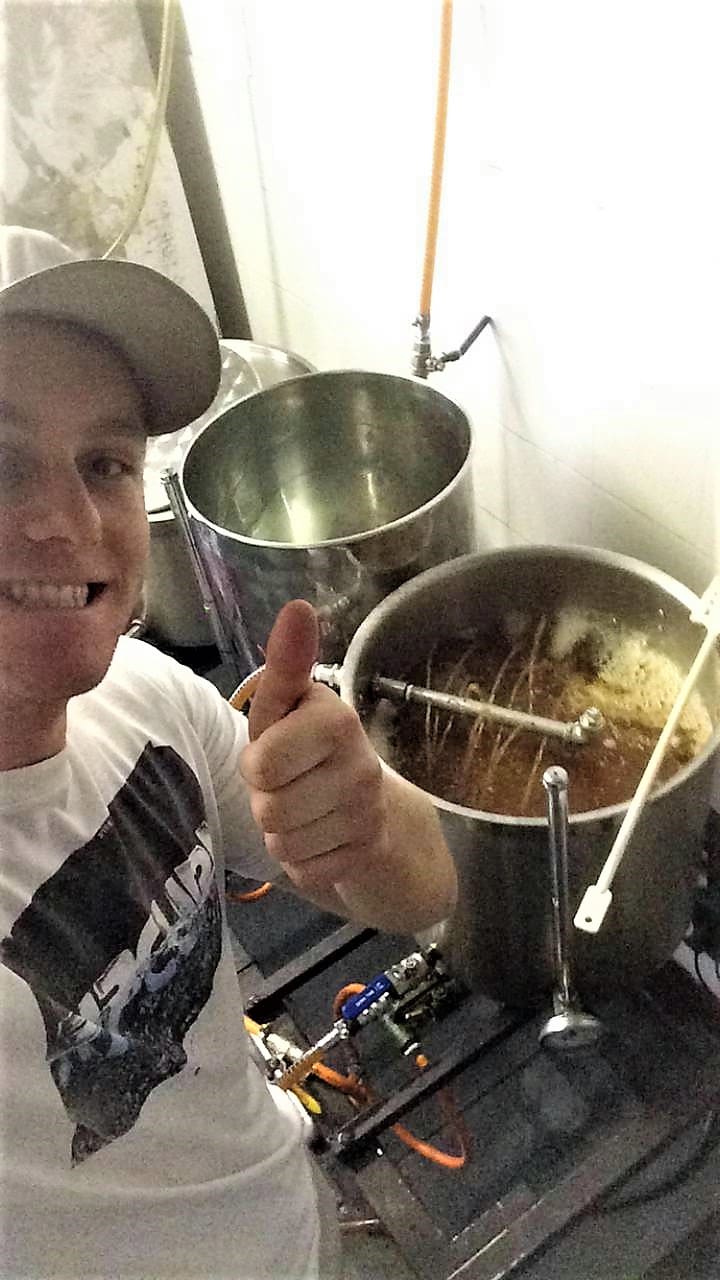
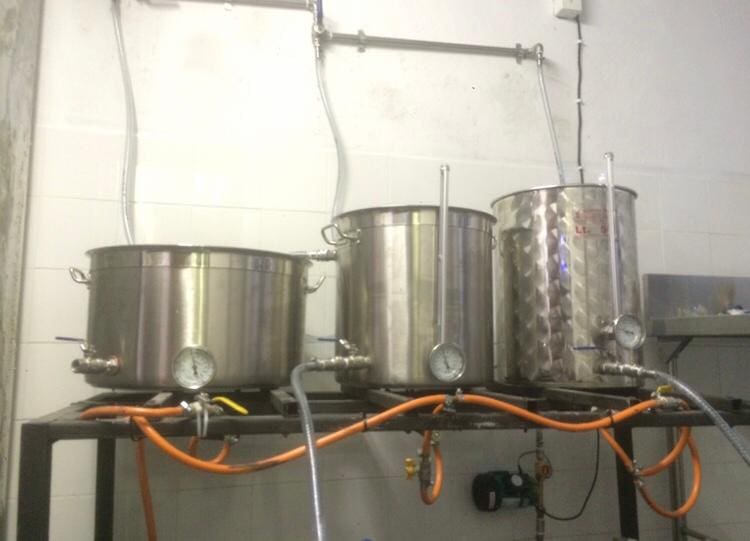 My biggest life decision came after the SANAE 56 take over expedition. I had to choose whether to continue my studies or work in the field that I had studied or to pursue the brewing business. At the time the business did not feel like a sustainable option, but I saw it as an experience that I could learn from. It all fell into place when I secured an investor that funded a proposal, I put forward to purchase a brewery from the UK. Signed, sealed and my brewing path had been decided. I spent two months in the UK packing up a brewery into a container to send back to Cape Town. The equipment was in perfect condition when it landed after a long cruise from Bristol port. Over the next few years, the business grew, and the brand has become established in the brewing industry.
My biggest life decision came after the SANAE 56 take over expedition. I had to choose whether to continue my studies or work in the field that I had studied or to pursue the brewing business. At the time the business did not feel like a sustainable option, but I saw it as an experience that I could learn from. It all fell into place when I secured an investor that funded a proposal, I put forward to purchase a brewery from the UK. Signed, sealed and my brewing path had been decided. I spent two months in the UK packing up a brewery into a container to send back to Cape Town. The equipment was in perfect condition when it landed after a long cruise from Bristol port. Over the next few years, the business grew, and the brand has become established in the brewing industry.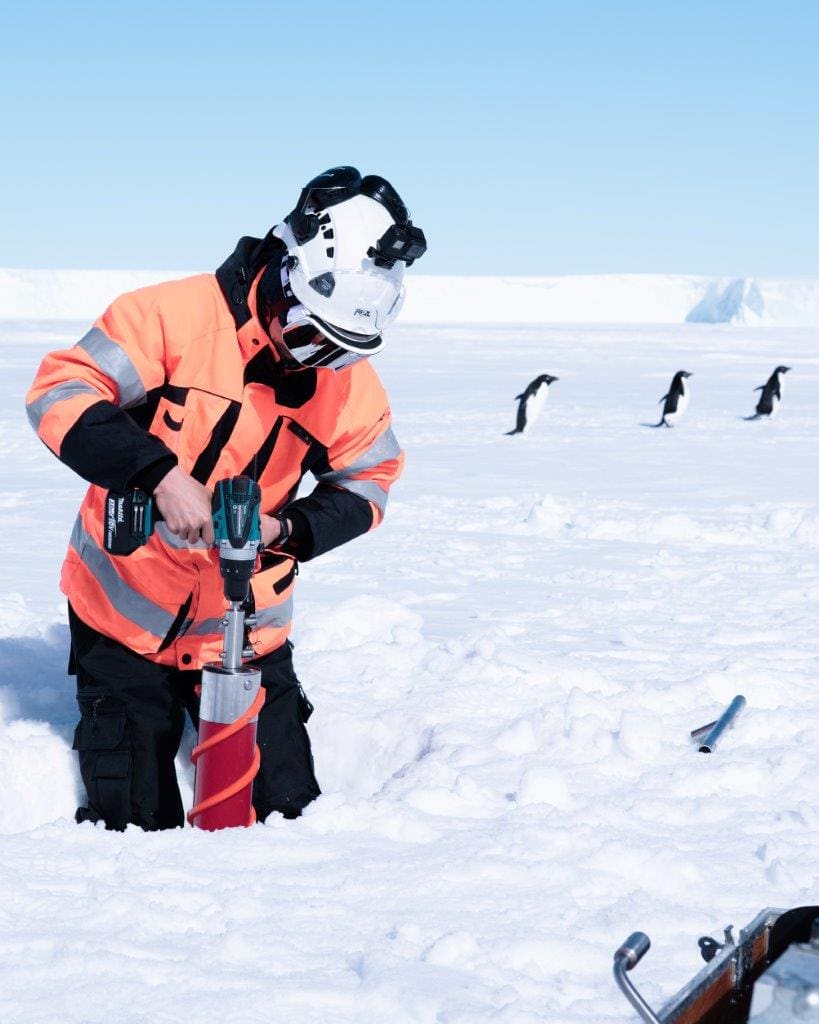
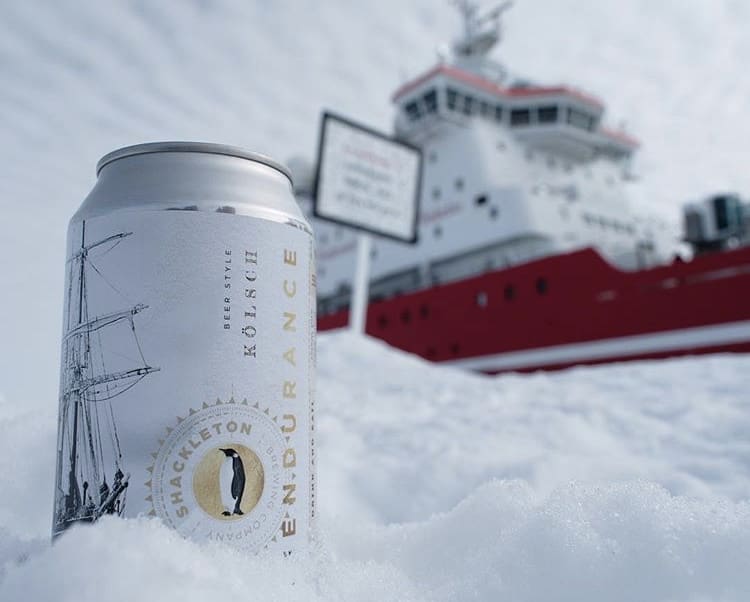 It had always been a goal to collaborate with
It had always been a goal to collaborate with 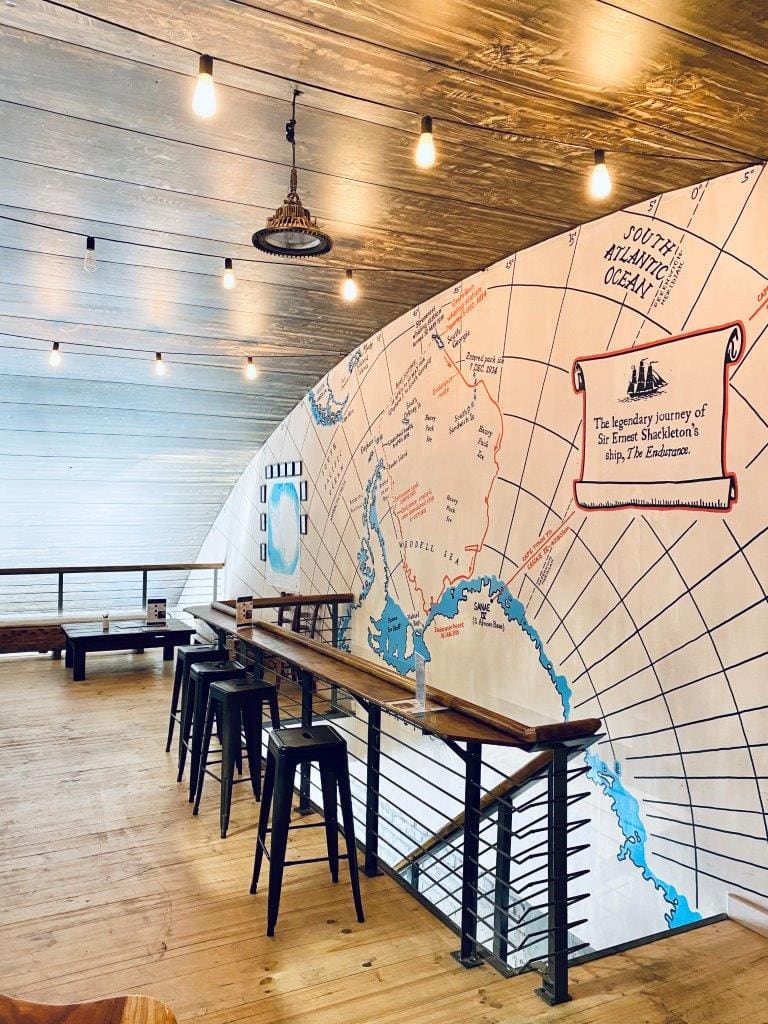

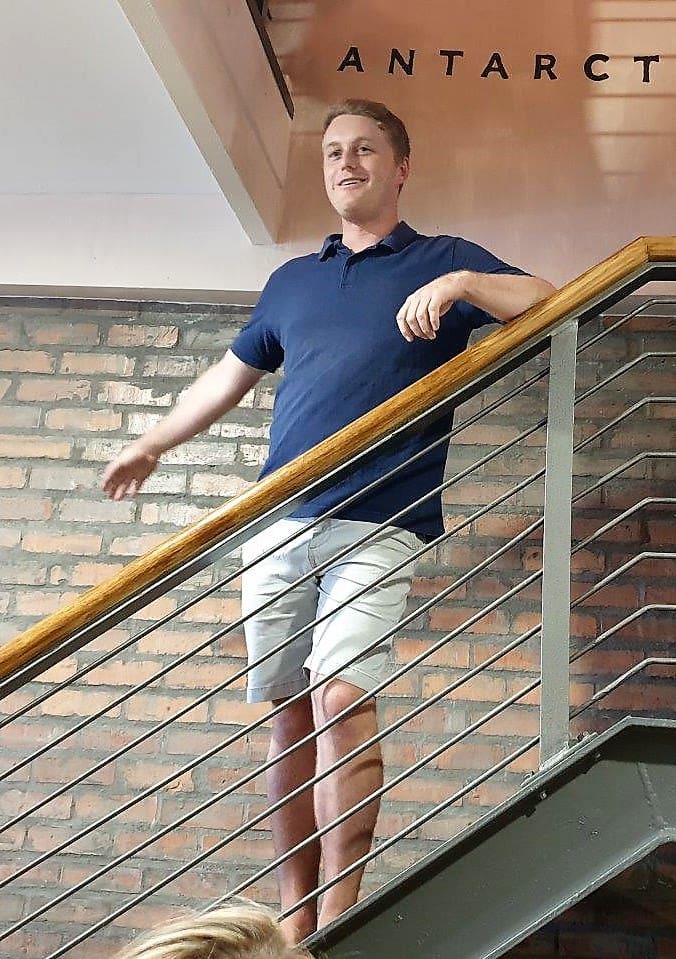
 Why you love your career in science?I have a huge obsession with business and the many ways to make success out of it. That said, it’s incredibly difficult to actually succeed. Where I feel my true expertise, lie is in the science of brewing. I love the care and attention to all variables that create the outcome. Small slip ups in brewing have exponential knock on effects in the end product. There is science in controlling these variables to consistently producing the same product. There is a saying which I really appreciate – “brewing beer is a science but brewing great beer is an art”. I believe if you can marry the two, you’ll have success in the quality of the product.
Why you love your career in science?I have a huge obsession with business and the many ways to make success out of it. That said, it’s incredibly difficult to actually succeed. Where I feel my true expertise, lie is in the science of brewing. I love the care and attention to all variables that create the outcome. Small slip ups in brewing have exponential knock on effects in the end product. There is science in controlling these variables to consistently producing the same product. There is a saying which I really appreciate – “brewing beer is a science but brewing great beer is an art”. I believe if you can marry the two, you’ll have success in the quality of the product.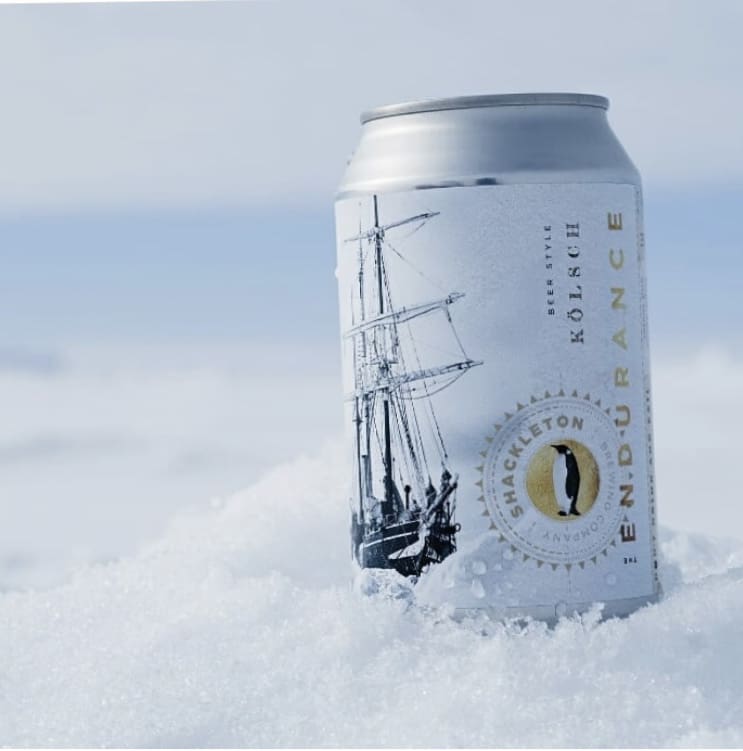
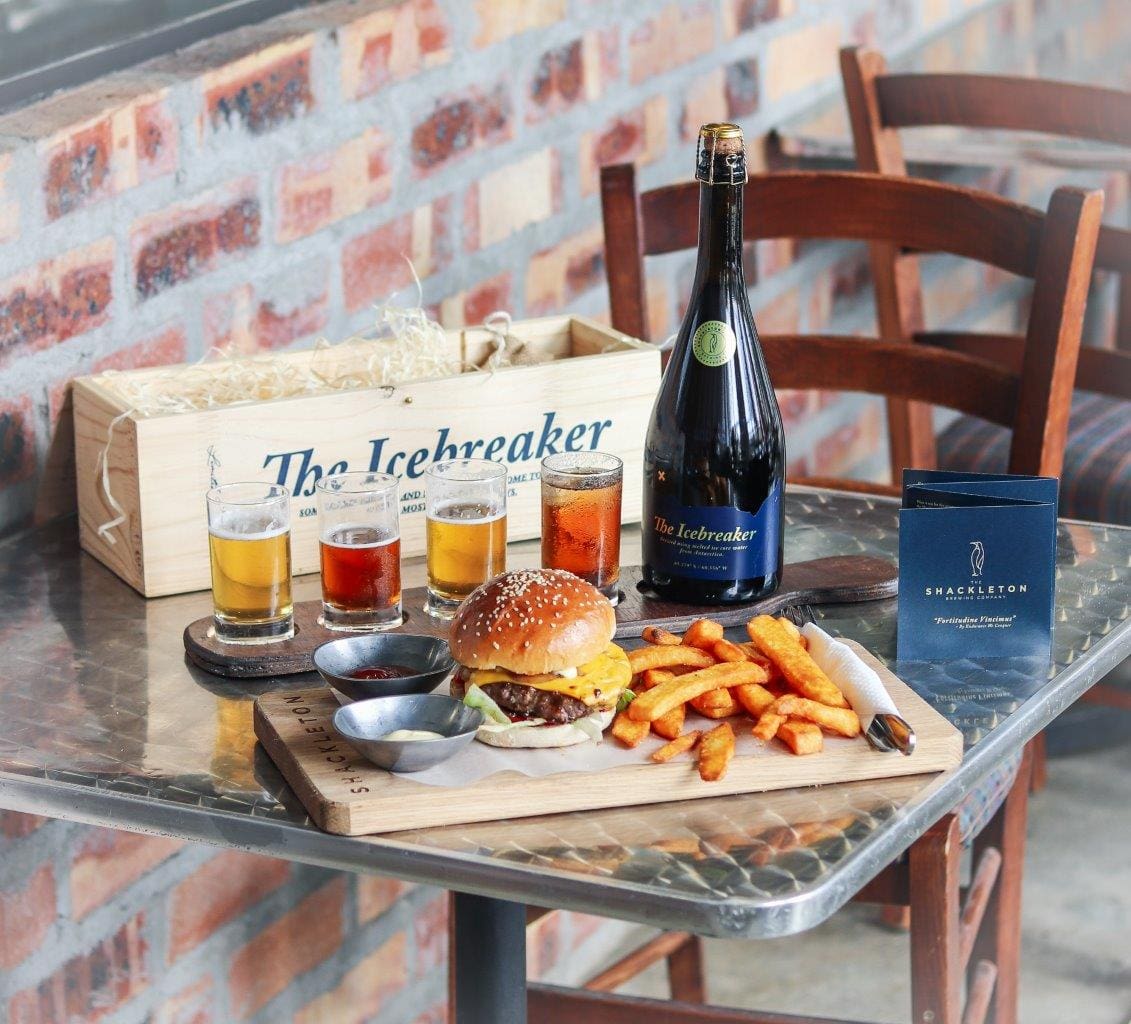
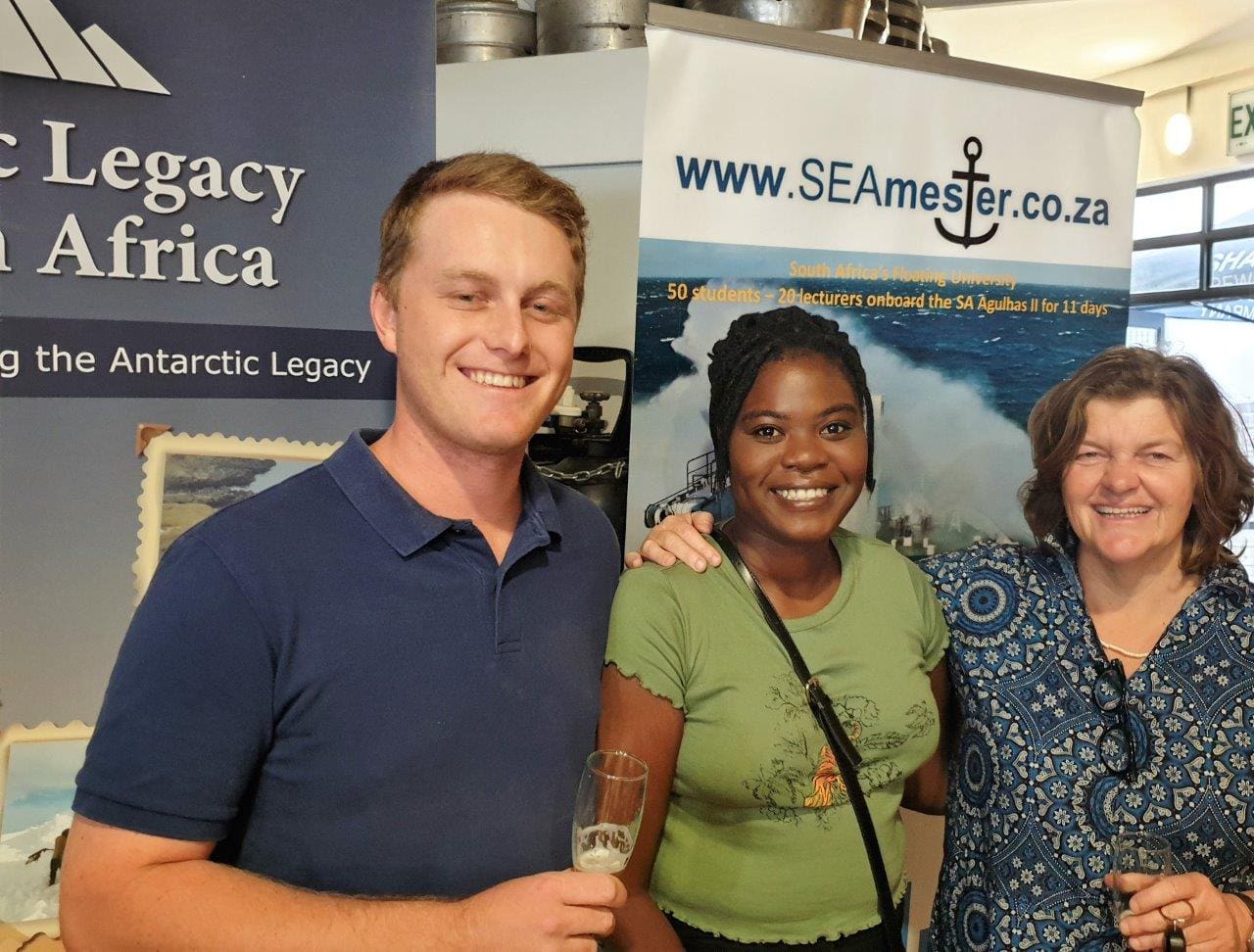 My message to future scientists and researchers: “I believe that science and exploration is a noble pursuit but undoubtedly a rewarding one. It is also our duty to better understand the world and how best to preserve nature its beauty. There is also infinite amount of problems to solve and hypothesize to prove. By becoming a scientist, I believe you are an explorer with intrigue and wonder. I have had the privilege of working with ground-breaking scientists and researchers who have dedicated their life contributing to our collective knowledge about the world.”
My message to future scientists and researchers: “I believe that science and exploration is a noble pursuit but undoubtedly a rewarding one. It is also our duty to better understand the world and how best to preserve nature its beauty. There is also infinite amount of problems to solve and hypothesize to prove. By becoming a scientist, I believe you are an explorer with intrigue and wonder. I have had the privilege of working with ground-breaking scientists and researchers who have dedicated their life contributing to our collective knowledge about the world.”
